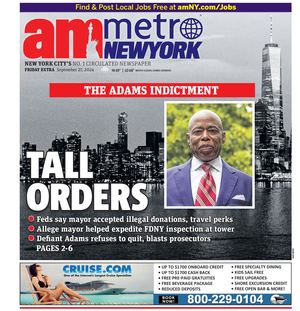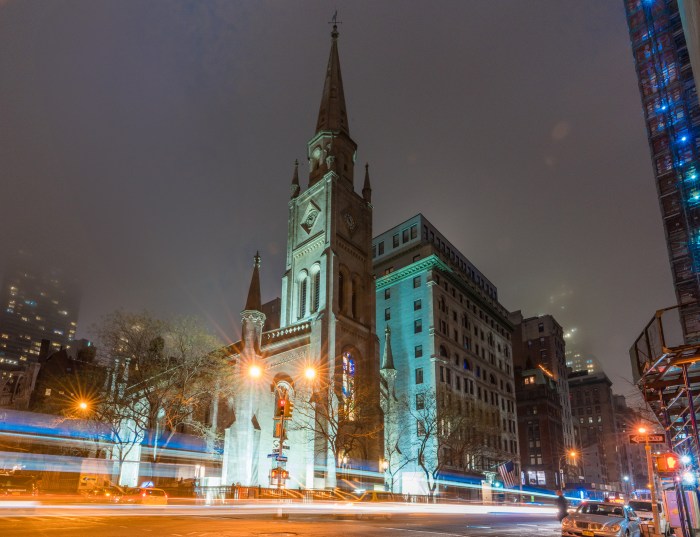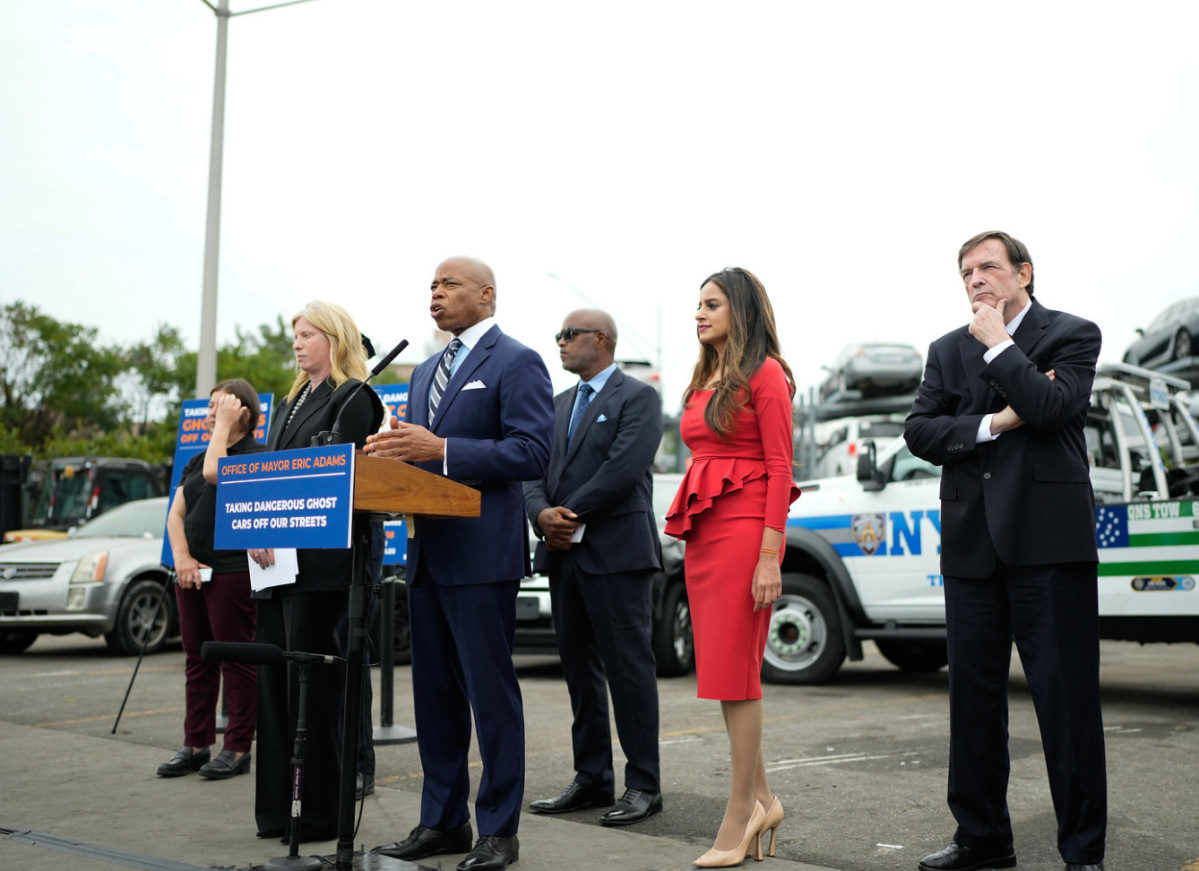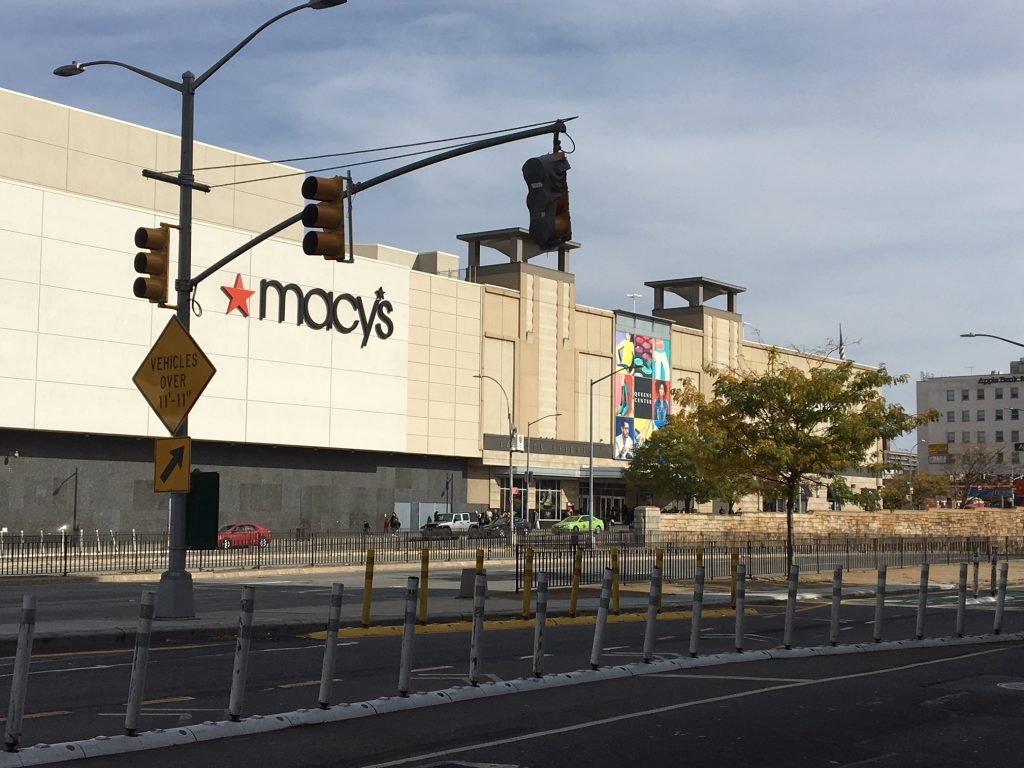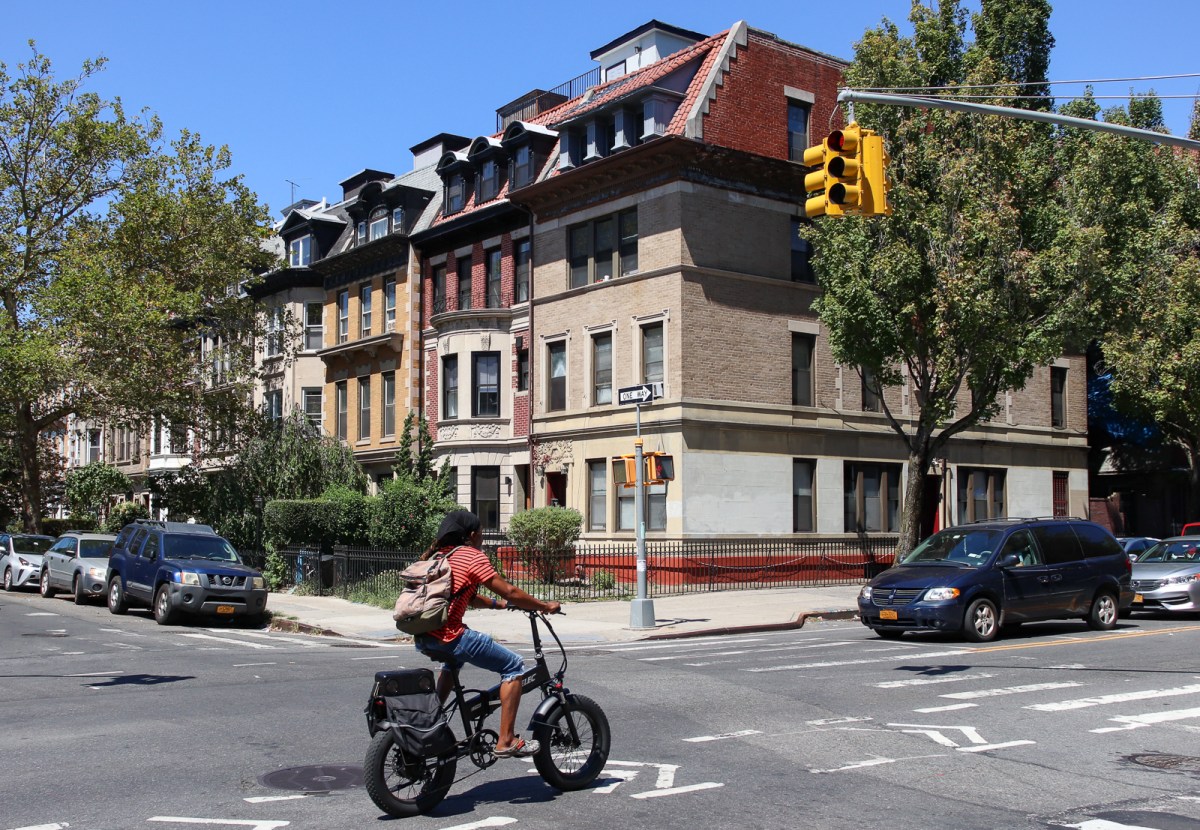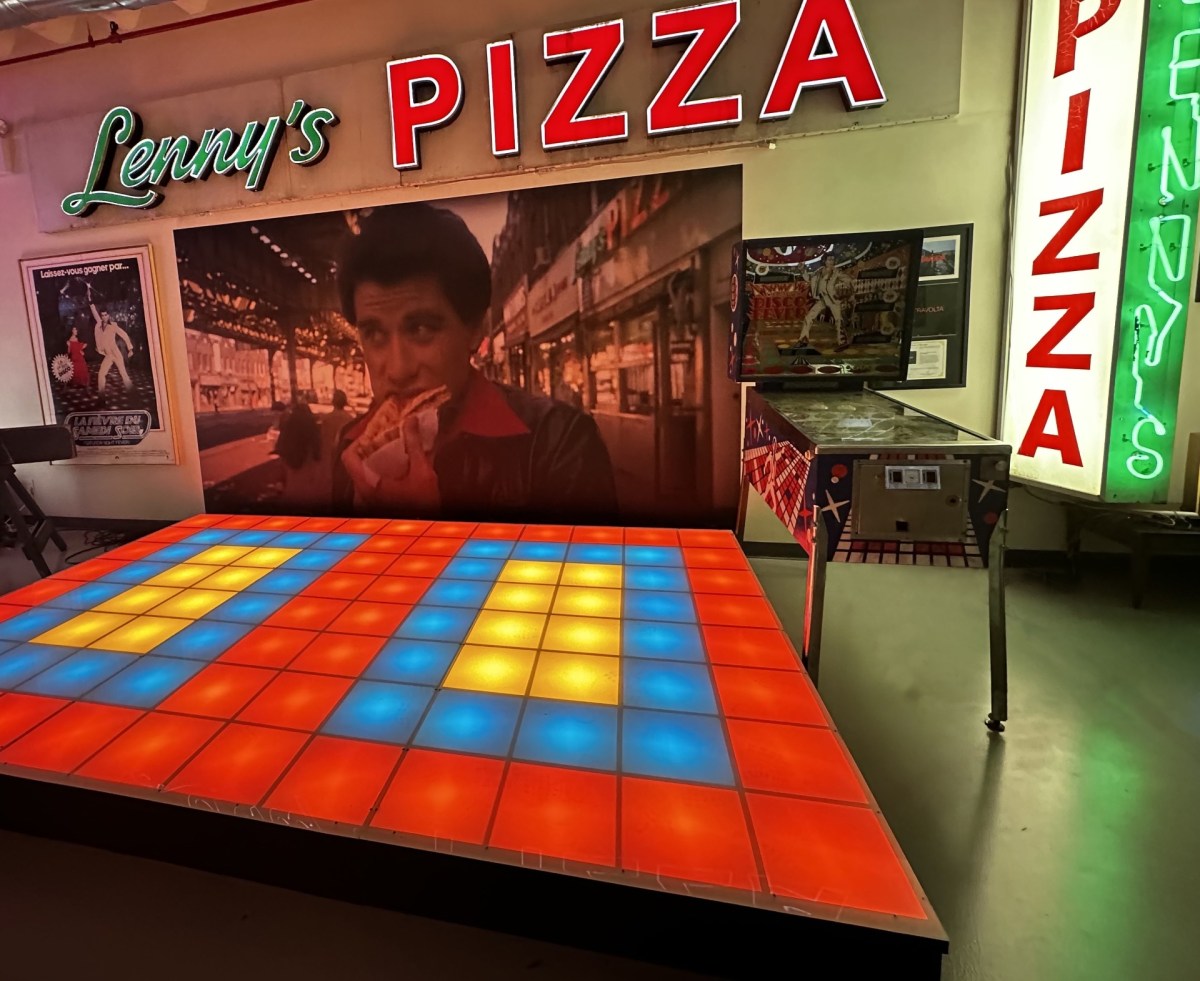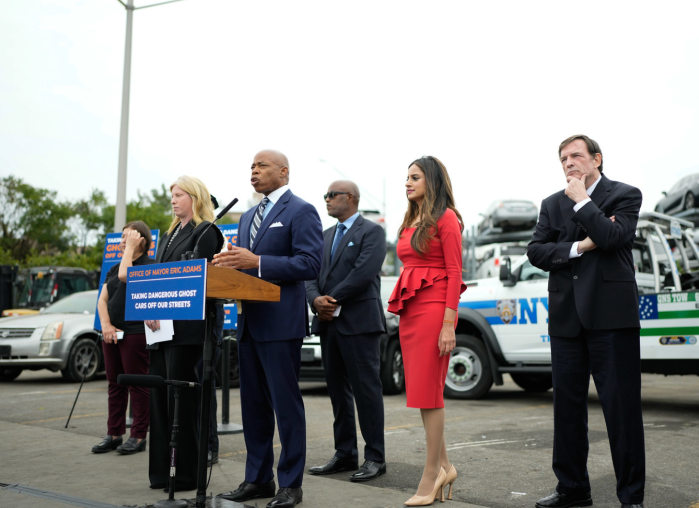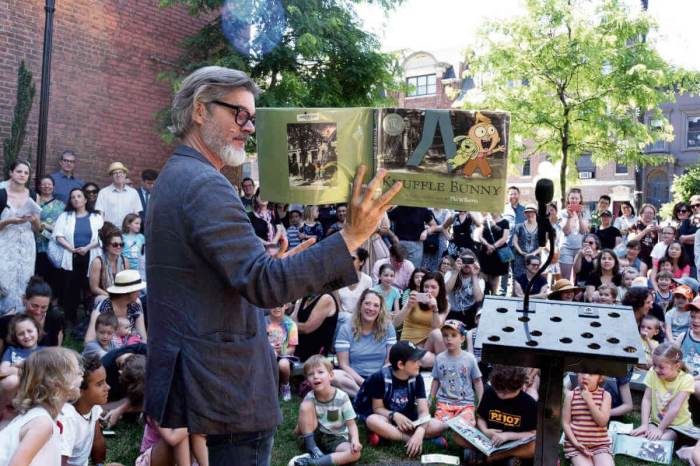By Albert Amateau
The Department of Sanitation garage for three sanitation districts proposed for the UPS site on Spring St. between Washington and West Sts. drew a chorus of criticism last Thursday from neighborhood residents and property owners at a joint hearing by Community Boards 1 and 2.
The Department of Sanitation has slightly modified the proposal it first presented to the public more than a year ago for a garage that would accommodated trucks for Districts 1, 2 and 5.
Instead of a building between 140 and 150 feet tall, the garage would be no taller that 120 feet, Daniel Klein, D.O.S. director of real estate, said at the June 12 hearing, which marked the beginning of a nine-month uniform land use review procedure, or ULURP, for the project.
But it was still too much for neighbors in the increasingly residential area, and the joint resolution drafted by David Reck, C.B. 2 Zoning Committee chairperson, reflects a similar response.
“Our main question is why is Sanitation District 5 being included in this project?” Reck said later.
The first recommendation in the boards’ joint resolution on the project is that District 5 should be eliminated from the proposal.
Another sore point was the provision in the project for parking for 75 cars of Sanitation employees.
“Is this a gift that the city is giving to employees?” asked one audience member.
Pressed by questions about the necessity for employee parking, Klein acknowledged that it was not a necessary requirement. But he defended the parking by saying that Sanitation employees are not required to live within the city and may need their cars to come to work during snowstorms. Committee members suggested that Sanitation employees could park at Pier 40, at W. Houston St., which is likely to continue its public parking service after it is redeveloped.
Michael Kramer, representing major property owners including the commercial St. John’s Center and the Urban Glass House residential building on Spring St., said the proposed employee parking would add $55 million to the cost of the garage project.
However, last Thursday night, right before C.B. 2’s full board voted on a resolution on the garage, Arthur Schwartz, C.B. 2 Waterfront Committee chairperson, stressed that the resolution should not state that the 75 Sanitation employee cars be parked at Pier 40. He explained that a new redevelopment plan for Pier 40 is due to be presented to the Hudson River Park Trust at the end of this month, and that this plan may well include other revenue-generating uses for this space. The board members agreed, and the resolution was modified to state only that the 75 parking spaces not be included at the garage, without saying where they should be located.
The department’s proposal calls for Sanitation vehicles from each of the three districts to leave and return to the garage by separate routes, some of them involving turns on Spring, Washington and Canal Sts. The community boards’ joint resolution calls for all Sanitation vehicle entries and departures to be from West St.
UPS would use the garage’s first floor to unload tractor-trailers and load delivery vans and would use Washington St. to access the facility.
The project also provides for a shed on the south side of Spring St. at Canal St. to store winter road salt for the three districts, and the joint resolution suggests that road salt storage should be kept elsewhere. Kramer said the existing salt shed under the Manhattan Bridge is currently underused and could be expanded.
The proposal, which provides for a green-planted roof on the garage, also would be built without any setbacks under Sanitation’s design. However, the boards’ joint resolution calls for three setbacks with plantings on the Spring St. side.
In addition, the resolution calls for a new pedestrian crossing of West St. to be created at Spring St. Currently, the nearest crosswalk on West St. is at Canal St.
“We’re suggesting these mitigations to make the best of a bad idea,” said Brad Hoylman, Community Board 2 chairperson.
And the consensus of community leaders was that the project has too many flaws. Community Board 1 member Marc Ameruso noted that Hudson Square — which is in Board 2 but borders Board 1 — includes the entrance to the Holland Tunnel, and has the second-worst air quality in Manhattan, worse even than the South Bronx. Ann Arlen, former C.B. 2 Environment Committee chairperson, referred to the poor air quality and said that Sanitation District 5 trucks would add 5,600 more annual miles of traffic to the already beleaguered area.
Residents said that the underground storage of 34,000 gallons of fuel to supply the three Sanitation districts’ trucks is especially dangerous for a district that includes the tunnel access and large residential buildings like the Urban Glass House and the residential buildings at 505 and 497 Greenwich St.
Since Districts 1 and 2 cart their trash to the Essex County, N.J., Resource Recovery Center, it was suggested that they refuel there rather than at the proposed garage.
The project was driven by a court-ordered settlement last year of a lawsuit calling for Sanitation trucks to get off Gansevoort Peninsula — which is to be redeveloped as a park as part of Hudson River Park — by 2012.
“The good thing is that Sanitation is getting off Gansevoort,” said Tobi Bergman, a C.B. 2 member. “The bad thing is that a garage with UPS and three Sanitation district trucks is really more than our fair share.”
Barbara Siegel, a member of the Canal West Coalition, said the project — which would also encompass the present Community Board 1 garage between Spring and Canal Sts. on West St. for use as the salt shed — would devastate the new Canal St. Park that was completed two years ago.
Denise Levine, a resident of 505 Greenwich St., which is within 400 feet of the proposed garage and refueling station, noted that the fuel storage at the site would be in addition to the 40,000 gallons of diesel fuel stored at the St. John’s Center building just north of the site.
“Besides jeopardizing our health with 500 or so daily trips to the garage, Sanitation would jeopardize our safety,” she said.
